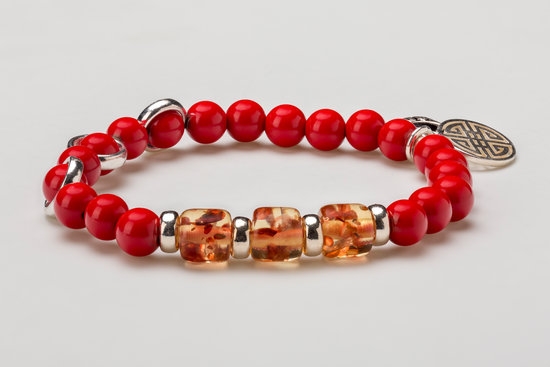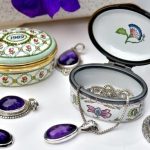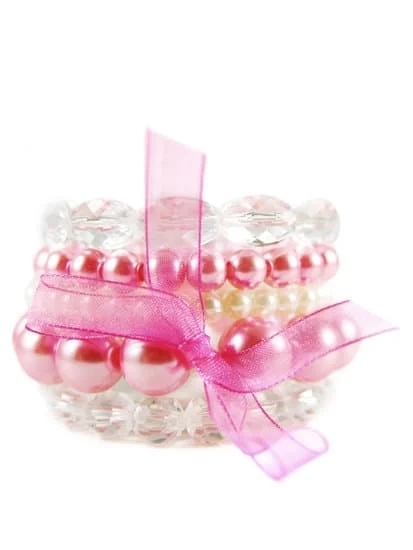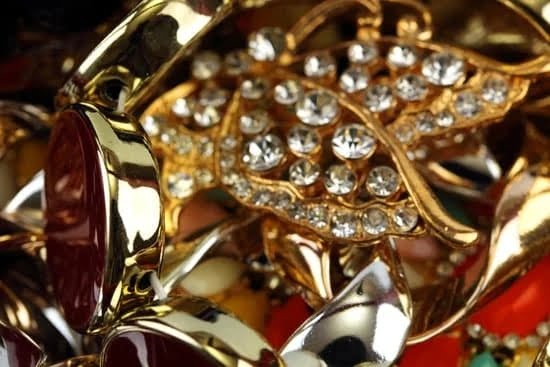How durable are ceramic beads in normal jewelry wear? In the world of jewelry making, the demand for durable materials is ever-present. Craftsmen and consumers alike seek out materials that can withstand the rigors of daily wear while maintaining their aesthetic appeal. Ceramic beads have gained attention in this regard, touted for their durability, versatility, and visual allure.
Ceramic beads are a popular choice for jewelry makers due to their unique composition and characteristics. Understanding the science behind these beads is key to appreciating their durability and suitability for everyday wear. This article will explore the advantages of using ceramic beads in jewelry making, factors affecting their durability, a comparison with other bead materials, real-life durability tests, and tips for maximizing their longevity.
Manufacturers and artisans extol the virtues of ceramic beads as a viable alternative to traditional materials like glass, metal, and plastic. However, questions persist about how they hold up in everyday use. By delving into their composition and conducting real-life durability tests, we can uncover whether ceramic beads truly live up to their reputation as a durable and stylish choice for jewelry making.
What Are Ceramic Beads?
Ceramic beads are becoming increasingly popular in the world of jewelry making due to their unique characteristics and aesthetic appeal. These beads are made from various types of clay that are kiln-fired at high temperatures, resulting in a durable and versatile material for crafting stunning jewelry pieces.
Composition
Ceramic beads are typically made from different types of clay such as earthenware, stoneware, or porcelain. These clays are mixed with water to form a pliable mixture that can be shaped into various bead designs. Once the desired shape is achieved, the beads are then fired in a kiln at temperatures ranging from 1,800°F to 2,300°F, which gives them their distinct hardness and durability.
Characteristics
One of the key characteristics of ceramic beads is their durability. When properly fired, these beads become resistant to scratches, chipping, and breakage, making them suitable for everyday wear. Additionally, ceramic beads come in an array of colors and finishes, allowing for endless design possibilities in jewelry making. Their ability to hold intricate details and textures also adds an element of uniqueness to each bead.
How Durable Are Ceramic Beads in Normal Jewelry Wear?
When considering the durability of ceramic beads in normal jewelry wear, it’s important to note that they can withstand everyday activities without sacrificing their integrity. However, environmental factors such as extreme temperature changes and exposure to chemicals can affect their longevity.
Proper handling and maintenance are essential in preserving the quality of ceramic bead jewelry over time. In comparison with other bead materials, ceramic beads hold up well and offer a balance between durability and aesthetic appeal – making them a favorable choice for jewelry making enthusiasts.
Advantages of Using Ceramic Beads in Jewelry Making
Ceramic beads are a popular choice for jewelry making due to their durability, versatility, and aesthetic appeal. But how durable are ceramic beads in normal jewelry wear? Ceramic beads are made from a combination of natural materials such as clay, minerals, and water, which are molded into shape and then fired at high temperatures.
This manufacturing process results in beads that are strong and resistant to chipping or breaking. In terms of normal jewelry wear, ceramic beads are highly durable and can withstand the rigors of daily use.
One of the key advantages of using ceramic beads in jewelry making is their durability. Compared to other bead materials like glass, metal, or plastic, ceramic beads are less prone to damage from everyday activities.
They are also versatile in terms of design and color options, allowing for endless creative possibilities when crafting unique pieces of jewelry. Additionally, ceramic beads offer an aesthetic appeal that is distinct from other materials, with a natural and organic look that adds a touch of rustic charm to any jewelry design.
When it comes to factors affecting the durability of ceramic beads in jewelry wear, environmental factors play a significant role. Exposure to extreme temperature changes or prolonged moisture can impact the integrity of ceramic beads over time.
Proper handling and maintenance are also crucial in preserving the durability of ceramic bead jewelry. By following best practices for care and storage, such as avoiding direct contact with harsh chemicals or abrasive surfaces, one can ensure the longevity of ceramic bead jewelry pieces.
| Advantages | Durability |
|---|---|
| Versatility | Aesthetic Appeal |
| Highly durable | Resistant to chipping or breaking |
Factors Affecting the Durability of Ceramic Beads in Jewelry Wear
Ceramic beads are a popular choice for jewelry making due to their durability, versatility, and aesthetic appeal. However, their durability in normal jewelry wear can be influenced by several factors.
Environmental factors play a significant role in determining the longevity of ceramic bead jewelry. Exposure to moisture, extreme temperatures, and chemicals can affect the integrity of ceramic beads. For example, prolonged exposure to water or humidity can cause the ceramic beads to weaken or discolor over time. It is important to store ceramic bead jewelry in a dry and cool environment when not in use to prevent these environmental factors from causing damage.
In addition to environmental factors, the way ceramic bead jewelry is handled can impact its durability. Rough handling or dropping the jewelry onto hard surfaces can lead to chips or cracks in the ceramic beads. Proper care should be taken when wearing and storing ceramic bead jewelry to minimize the risk of damage from mishandling.
Regular maintenance is also crucial in preserving the durability of ceramic bead jewelry. Cleaning and polishing ceramic beads with gentle methods will help maintain their luster and prevent dirt and debris from accumulating on the surface. Additionally, checking for any loose or damaged beads and promptly addressing any issues will contribute to prolonging the lifespan of ceramic bead jewelry.
According to anecdotal evidence from jewelry makers and wearers who have utilized ceramic beads in their creations, proper care and handling can significantly extend the lifespan of ceramic bead jewelry. Adhering to best practices for environmental protection, careful handling, and routine maintenance will ensure that ceramic bead jewelry remains durable throughout its lifetime.
| Factors Affecting Durability | Impact |
|---|---|
| Environmental Factors | Moisture, extreme temperatures, chemicals can weaken or discolor beads |
| Handling | Rough handling or dropping can lead to chips or cracks |
| Maintenance | Cleaning, polishing, and routine checks for loose/damaged beads preserve longevity |
Comparison With Other Bead Materials
When it comes to selecting bead materials for jewelry making, one of the key considerations is durability. Ceramic beads have become increasingly popular in the jewelry-making industry due to their unique characteristics and aesthetic appeal. To better understand how ceramic beads compare to other commonly used bead materials such as glass, metal, and plastic, it is important to evaluate their durability in normal jewelry wear.
Durability of Ceramic Beads
One of the primary factors that make ceramic beads stand out is their remarkable durability. These beads are highly resistant to scratches, chipping, and fading, making them an ideal choice for everyday jewelry wear. The composition of ceramic beads contributes to their strength and resilience, ensuring that they can withstand the rigors of regular use without losing their luster or integrity.
Comparison With Glass Beads
Glass beads are a popular choice for jewelry making due to their vibrant colors and versatility. However, when it comes to durability, ceramic beads outshine glass beads. While glass beads may be more prone to breakage and damage with frequent wear, ceramic beads maintain their structural integrity over time.
Comparison With Metal and Plastic Beads
Metal and plastic beads are also common choices for jewelry making. While metal beads are durable, they may tarnish over time with exposure to moisture and chemicals. On the other hand, plastic beads are lightweight but may not hold up well under prolonged use. In comparison, ceramic beads offer a balance of durability and aesthetic appeal, making them a preferred choice for many jewelry makers.
Real-Life Durability Test
As jewelry makers and wearers continue to seek out durable materials for their creations, ceramic beads have gained attention for their potential longevity. But the question remains: how durable are ceramic beads in normal jewelry wear? Anecdotal evidence from jewelry makers and wearers provides valuable insights into the real-life durability of ceramic bead jewelry.
Many jewelry makers and artisans have reported positive experiences with using ceramic beads in their creations. Some have noted that ceramic beads show little to no signs of wear even after prolonged use, making them a dependable choice for crafting high-quality, long-lasting jewelry pieces. Additionally, wearers have praised the resilience of ceramic bead jewelry, noting that it has held up well through daily activities and occasional bumps or knocks.
To further understand the durability of ceramic beads in normal jewelry wear, it’s important to consider the experiences and feedback from those who regularly incorporate these beads into their designs. Here are some key points based on anecdotal evidence:
- Ceramic bead jewelry maintains its appearance even after extended periods of wear.
- Wearers have reported minimal damage or chipping to ceramic beads, even when worn frequently.
- The overall quality and resilience of ceramic bead jewelry make it a reliable choice for everyday use.
Overall, the anecdotal evidence suggests that ceramic beads demonstrate impressive durability in normal jewelry wear, making them a favorable option for both crafters and consumers seeking long-lasting, stylish accessories.
Tips for Maximizing the Durability of Ceramic Bead Jewelry
Ceramic beads are a popular choice for jewelry making due to their durability, versatility, and aesthetic appeal. However, the question remains: how durable are ceramic beads in normal jewelry wear? Understanding the factors that affect the durability of ceramic bead jewelry and implementing best practices for maintenance and care can help maximize their longevity.
One of the key advantages of ceramic beads is their durability. They are resistant to chipping, scratching, and fading, making them suitable for everyday wear. However, environmental factors such as extreme heat or cold can impact their resilience. It is important to store ceramic bead jewelry away from direct sunlight and moisture to prevent any potential damage.
Proper handling is crucial in maintaining the quality of ceramic bead jewelry. Avoiding sudden impacts or excessive force can help prevent breakage. When cleaning ceramic bead jewelry, it is essential to use gentle techniques and avoid harsh chemicals that may erode the surface or alter the color of the beads.
In addition to environmental factors and handling, regular maintenance plays a significant role in maximizing the durability of ceramic bead jewelry. Periodic inspection for loose or damaged beads, restringing if necessary, and storing them in a safe place when not in use can all contribute to preserving their quality and longevity. By following these tips for maximizing the durability of ceramic bead jewelry, individuals can continue to enjoy their timeless beauty for years to come.
Conclusion
In conclusion, ceramic beads have proven to be a durable and stylish choice for jewelry making. Their composition and characteristics make them resilient and versatile, allowing for the creation of stunning and long-lasting jewelry pieces. The advantages of using ceramic beads in jewelry making include their durability, versatility, and aesthetic appeal. These qualities make them a popular choice among jewelry makers and wearers alike.
While factors such as environmental conditions, handling, and maintenance can affect the durability of ceramic bead jewelry, proper care and best practices can help maximize their longevity. Despite these potential challenges, anecdotal evidence from jewelry makers and wearers suggests that ceramic bead jewelry can withstand normal wear quite well. This speaks to the strength and resilience of ceramic beads as a material for creating durable jewelry pieces.
When compared to other bead materials such as glass, metal, and plastic beads, ceramic beads hold their own in terms of durability. They offer a unique combination of strength and style that sets them apart in the world of jewelry making. As consumers continue to seek out durable yet fashionable accessories, it is clear that ceramic beads will remain a sought-after choice for creating timeless and enduring pieces of jewelry.
Frequently Asked Questions
Are Ceramic Beads Durable?
Ceramic beads are known for their durability, making them a popular choice for jewelry making and other crafts. Their hard, non-porous surface makes them resistant to chipping, fading, and wear over time.
What Are Ceramic Beads Used For?
Ceramic beads are used for a variety of purposes, including jewelry making, pottery decoration, and crafting projects. They come in a wide range of shapes, sizes, and colors, making them versatile for different creative endeavors.
How Do You Glaze Ceramic Beads?
Glazing ceramic beads involves carefully applying a layer of glaze to the surface of the bead before firing it in a kiln. The glaze can be brushed on or dipped, and it adds color and a glossy finish to the bead once fired.

Welcome to my jewelry blog! My name is Sarah and I am the owner of this blog.
I love making jewelry and sharing my creations with others.
So whether you’re someone who loves wearing jewelry yourself or simply enjoys learning about it, be sure to check out my blog for insightful posts on everything related to this exciting topic!





